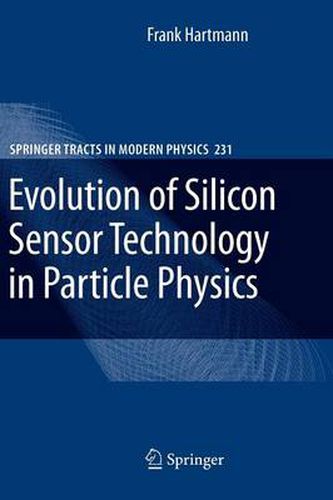Readings Newsletter
Become a Readings Member to make your shopping experience even easier.
Sign in or sign up for free!
You’re not far away from qualifying for FREE standard shipping within Australia
You’ve qualified for FREE standard shipping within Australia
The cart is loading…






This title is printed to order. This book may have been self-published. If so, we cannot guarantee the quality of the content. In the main most books will have gone through the editing process however some may not. We therefore suggest that you be aware of this before ordering this book. If in doubt check either the author or publisher’s details as we are unable to accept any returns unless they are faulty. Please contact us if you have any questions.
In the post era of the Z and W discovery, after the observation of Jets at UA1 and UA2 at CERN, John Ellis visioned at a HEP conference at Lake Tahoe, California in 1983 To proceed with high energy particle physics, one has to tag the avour of the quarks! This statement re ects the need for a highly precise tracking device, being able to resolve secondary and tertiary vertices within high-particle densities. Since the d- tance between the primary interaction point and the secondary vertex is proportional tothelifetimeoftheparticipatingparticle,itisanexcellentquantitytoidentifypar- cle avour in a very fast and precise way. In colliding beam experiments this method was applied especially to tag the presence of b quarks within particle jets. It was rst introduced in the DELPHI experiment at LEP but soon followed by all collider - periments to date. The long expected t quark discovery was possible mainly with the help of the CDF silicon vertex tracker, providing the b quark information. In the beginning of the 21st century the new LHC experiments are beginning to take 2 shape. CMS with its 206m of silicon area is perfectly suited to cope with the high luminosity environment. Even larger detectors are envisioned for the far future, like the SiLC project for the International Linear Collider. Silicon sensors matured from small 1in. single-sided devices to large 6in. double-sided, double metal detectors and to 6in. single-sided radiation hard sensors.
$9.00 standard shipping within Australia
FREE standard shipping within Australia for orders over $100.00
Express & International shipping calculated at checkout
This title is printed to order. This book may have been self-published. If so, we cannot guarantee the quality of the content. In the main most books will have gone through the editing process however some may not. We therefore suggest that you be aware of this before ordering this book. If in doubt check either the author or publisher’s details as we are unable to accept any returns unless they are faulty. Please contact us if you have any questions.
In the post era of the Z and W discovery, after the observation of Jets at UA1 and UA2 at CERN, John Ellis visioned at a HEP conference at Lake Tahoe, California in 1983 To proceed with high energy particle physics, one has to tag the avour of the quarks! This statement re ects the need for a highly precise tracking device, being able to resolve secondary and tertiary vertices within high-particle densities. Since the d- tance between the primary interaction point and the secondary vertex is proportional tothelifetimeoftheparticipatingparticle,itisanexcellentquantitytoidentifypar- cle avour in a very fast and precise way. In colliding beam experiments this method was applied especially to tag the presence of b quarks within particle jets. It was rst introduced in the DELPHI experiment at LEP but soon followed by all collider - periments to date. The long expected t quark discovery was possible mainly with the help of the CDF silicon vertex tracker, providing the b quark information. In the beginning of the 21st century the new LHC experiments are beginning to take 2 shape. CMS with its 206m of silicon area is perfectly suited to cope with the high luminosity environment. Even larger detectors are envisioned for the far future, like the SiLC project for the International Linear Collider. Silicon sensors matured from small 1in. single-sided devices to large 6in. double-sided, double metal detectors and to 6in. single-sided radiation hard sensors.